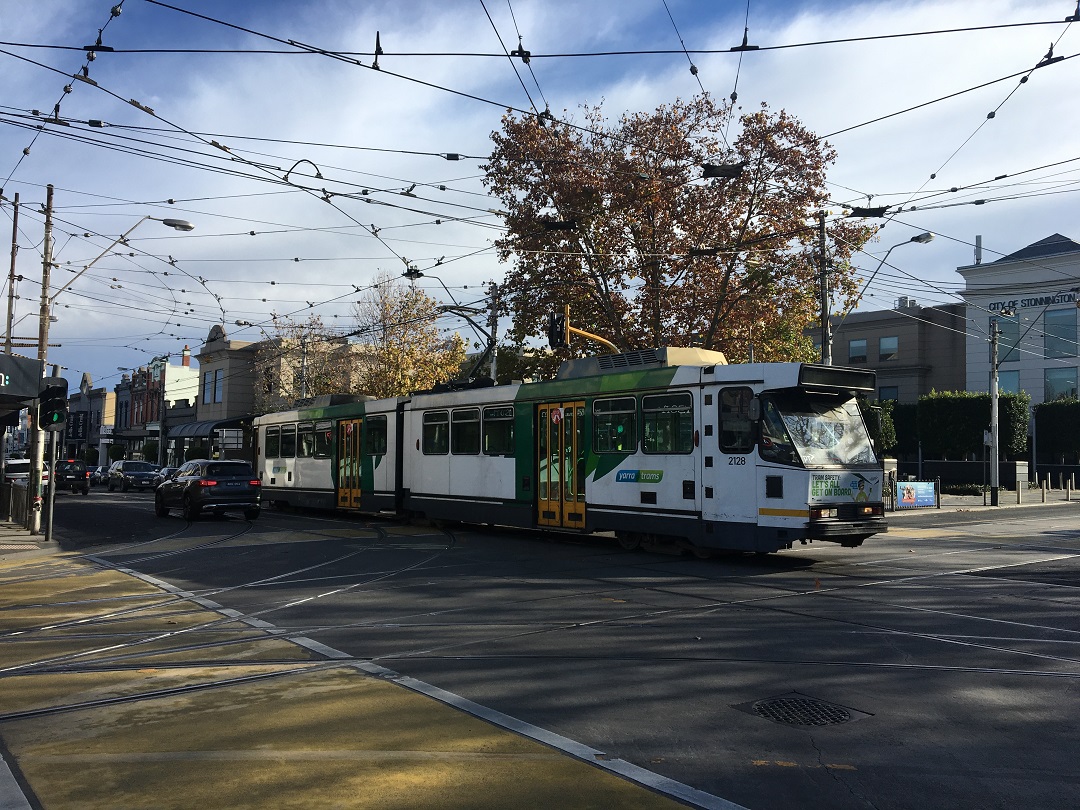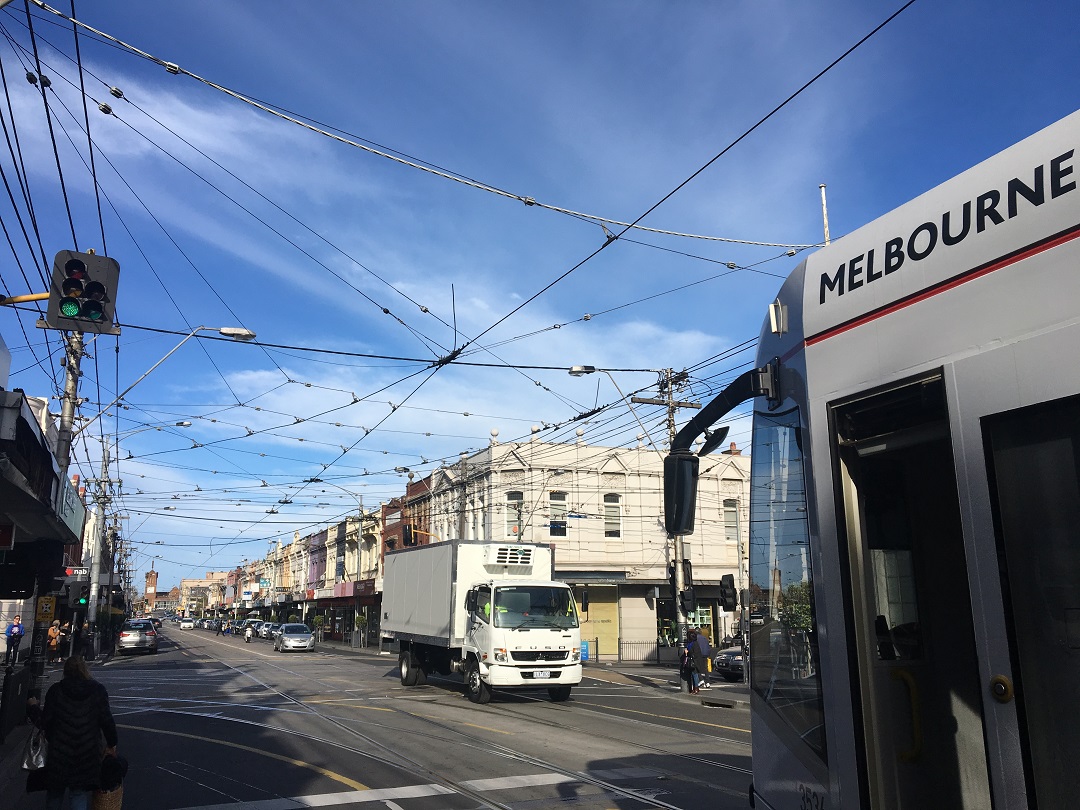
Flies to the urban spiderweb—we’re doing away with overhead tram lines.
Trams are as Melbourne as the MCG and an obsession with coffee. But while Melbourne has the world’s largest tram network (250 km), other Australian cities like Sydney and Newcastle are rekindling their love affair with light rail.
Until recently it’s come at a cost, the thick “spiderweb” of overhead cables needed to keep electrified light rail on the move. They’re ugly, costly to maintain and require their own complex network of infrastructure and sub-stations.
Now though, there’s a new kid on the block that could do away with overhead power lines and move everything safely onboard the tram. Supercapacitors are milk carton size devices that can store large amounts of energy, release it in fast bursts, and then recharge rapidly. It means a tram could arrive at a stop, be charged up with megawatts of power in a minute, then continue on its way. All without the need for overhead power lines.
We’re working on a range of supercapacitor projects with the Australian Government’s Rail Manufacturing Cooperative Research Centre and the China Railway Rolling Stock Corporation (CRRC).
CRRC is renowned for building the world’s first supercapacitor-powered light rail. Now we’re working with them to develop an improved energy management system to make the technology commercially viable. That has involved updating cell balancing, charge and discharge profiles, and communications between the on-board system and the supercapacitors.

Talk about grid-lock—Melbourne’s overhead power lines.
A new prototype, developed in Sydney, has already been sent to China for testing.
Getting rid of overhead power lines would mean the sky’s the limit for light rail. It opens the way for more design flexibility and taller trams that can carry vastly more people. All while greatly reducing construction and maintenance costs. Regenerative braking could also be used to harness the kinetic energy of slowing a tram and turn it into a sustainable power source to get it moving again.
Australia’s rail supply industry employs more than 15,000 people in the manufacturing sector, in businesses ranging from small enterprises through to large multinationals. By cooperating with global partners like CRRC we’re developing new technology that allow the industry to improve its capability and international competitiveness.
And given Australia’s new fondness for light rail, our technology could soon be coming to a street – but not sky – near you!
Did you know:
- Melbourne’s trams travel far enough a year combined to make 32 return trips to the moon.
- Before it closed in 1961, Sydney’s tram network was Australia’s most extensive (291 km) and remains the nation’s largest ever public transport carrier, moving 400 million people a year.
- Broken Hill once had a tram line. It transported passengers and silver ore to and from the South Australian border.
- Newcastle will have Australia’s first “wireless” light rail system. It’s scheduled to be completed in 2019.
Find this energising?
We’ve got plenty of bright sparks working on next generation electronics.


14th June 2019 at 12:24 pm
I think CSIRO should fess up to what is at least a misleading statement. To say “charged up with megawatts of power in a minute” is like saying “millions of Joules per second per minute”. Although there is strictly no error in the statement, it only serves to continue the confusion about power and energy.
25th June 2018 at 9:02 pm
Looking forward to this becoming a reality – I wrote an article about this some years back: Alternative Traction Power Distribution Systems within the Urban Environment (https://www.aurecongroup.com/en/thinking/insights/metros-and-urban-rail/alternative-traction-power-distribution-systems.aspx)
24th June 2018 at 8:08 pm
Perhaps it should be mentioned for completeness that underground power has been an option for tramways for many years – though admittedly at relatively high cost. https://en.wikipedia.org/wiki/Bordeaux_tramway
24th June 2018 at 2:29 pm
Great work CSIRO, both for the project you are working on and for the opportunities it may enable. Maybe it would be suitable for electric car charging stations, like petrol stations now, and thus anywhere needed in Australia. Or expanding the current tram network, easily without the expense or need for the overhead cabling.
24th June 2018 at 2:16 pm
I Just wonder if super capacitors are magic enough to survive serious solar/magnetic storms, an expected risk as the Earth magnetic norm is reducing annually. Can you prepare for the risk?